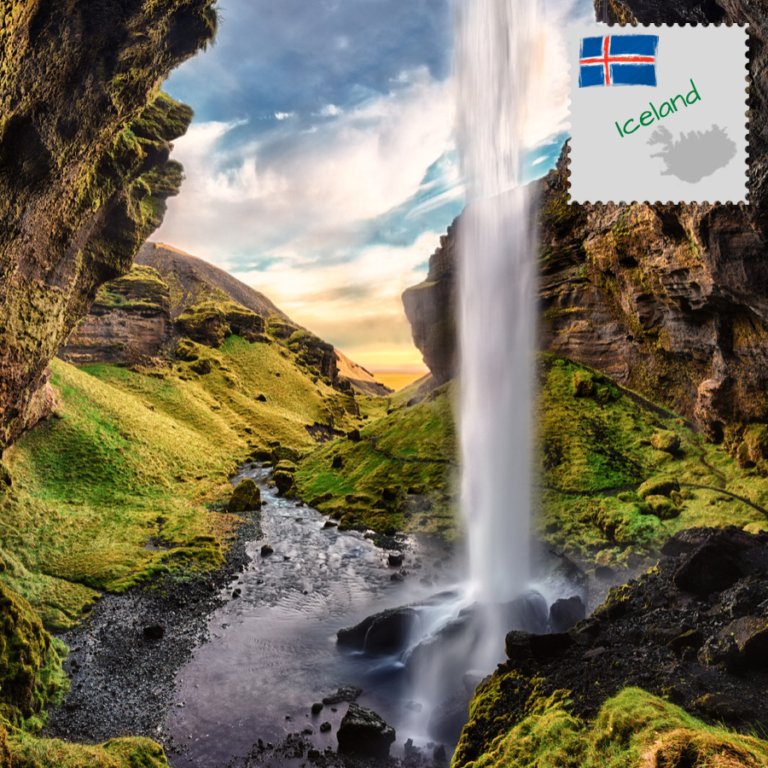
From the windows of the airport or seeing the island in an aerial view from a plane, you will be sure to miss the glaciers that cover one-tenth of the land the forests that cover only 1% of the country. Iceland is an island just south of the Arctic Circle in the North Atlantic, with a culture that derives from 9th-century Viking settlers. The country, along with its people, has withstood a harsh, volcanically active environment that can only be explored by exploring the island by car or bus and staying in hotels and such, or camping it out.
Sometimes called the Land of Ice and Fire, Iceland is most notably known for its large glaciers that lie beside steaming hot springs, which are common in the southwest. For this, Iceland’s capital was named Reykjavik, meaning Smoky Bay.
Most people residing in Iceland live in the narrow coastal plain near Reykjavik. Outside of the city, visitors can visit the Blue Lagoon, one of the country’s most popular attractions. The Blue Lagoon is a natural pool of mineral-rich geothermal water located in the middle of a lava field. The warm waters are also known for their beneficial effects on the skin.
Many might be surprised to learn that Icelandair offers free stopovers for up to seven days. Day-trippers can ride horses to the mountains, fish, hike, view volcanoes, or experience a hot-springs dip. There are also tours that go to glaciers, waterfalls, lava fields, and volcanoes, with accommodations that provide sleeping-bag-style inside huts.


The official language of Iceland is Icelandic, spoken by nearly 340,000 inhabitants and is the native language of the island. Despite finding many foreign-language speakers, the majority of the population continues to speak Icelandic.

Iceland’s currency is the Icelandic króna (US $1 = ISK $128.95)

Iceland is a party to the Schengen Agreement, which means that U.S. citizens may enter to Iceland for up to 90 days for tours or business purposes without a visa. Your passport should be valid for at least six months beyond your planned date of departure from the Schengen area.

As a European nation, Iceland is free with most international plans. Android phones can also accept an Icelandic SIM card. In most cases, you have unlimited use of WiFi for free. Depending on where you are, you may be able to find WiFi on local public transportation. In major cities, buses and trains are usually equipped with it.

Tipping isn’t required in Iceland as service and VAT taxes are always included in prices. At restaurants, rounding up the bill or leaving a small tip for good services is always appreciated.

Iceland is an almost cashless society where credit cards reign supreme, even in the most rural reaches. Pin numbers are required for purchases and ATMs are available in all towns.

You will need a power plug adapter in Iceland, when living in the United States. You will also need a voltage converter. Be extra careful with certain appliances because of the differences in frequency. In Iceland, power plugs and sockets are of Type F. The standard voltage is 230 V and the standard frequency is 50 Hz.

Midnight sun and warmer temperatures make summer the best season to visit Iceland. Although hikers will want to consider July and August as the best time to visit Iceland whereas February, March, September, and October are typically the best time to visit Iceland for the Northern Lights. The offseason is basically from early Autumn to late Spring (September – May). During these months, January – May is probably the lowest in terms of the tourist crowds, which means these are the cheapest months to fly, rent a car and find accommodation in Iceland.
Driving by yourself in Iceland is a unique way to experience the country, at the same time, public transportation is available all over the island.
There are several 24-hour taxi companies in Reykjavik, just a phone call away from anywhere in the city. All taxis have official mileage meters and taxi fares are charged at standard rates. Some taxi companies offer special prices on transport to and from Keflavik Airport, which is just an hour’s drive from Reykjavík city center.
It is possible to travel around Iceland by bus but in order to do so, it is advisable to plan in advance. You can find which buses go where on the Public Transport website. The public transportation system. Operates buses in Reykjavík and around the country. Find out more on the website of the Icelandic Public Bus Network.
Regular flights are scheduled from Reykjavík to domestic airports in all parts of the country. In co-operation with local bus companies, most towns in Iceland are connected to a regional airport, giving you easy access from Reykjavík to anywhere.
Cars can be booked through a travel agent or an airline, at airports or directly after arrival in Iceland. Many types of cars are available, from small family cars to powerful four-wheel-drive vehicles. Regular cars will suffice to go around the country, but some places may require 4-wheel drive and/or bigger vehicles. Please refer to your car rental to make sure you have the appropriate vehicle for your destination.
A number of ferry lines operate services to various islands and fjords. Regular sightseeing tours are also available by ferries during the summer.
In the past, Icelandic food had to be stored in a way that allowed it to last for a long period. This meant that Icelandic people needed to get creative. As a result, dishes were often fermented, smoked, salted, and cured. Food was even preserved inside jello as a way to keep it edible. Today, Iceland’s food scene won’t disappoint even the most avid foodies. The pillars of Icelandic cuisine are meat, dairy, and fish. For a long time, Icelandic people didn’t grow green vegetables or fruit. Apples and oranges were luxury items only shipped to the country during big celebrations such as Christmas. Icelandic food is known for its fresh ingredients and unique dishes. Foodies across the world come to the island to try out iconic Icelandic cuisines such as fermented shark and tasty skyr yogurt.
Icelandic Fish – Langoustine, cod, and haddock are the most common options. Fish is best enjoyed with a side of potatoes and classic Icelandic rye bread with butter.
Kleinur (Twisted Donut) – Kleinur is an Icelandic fried donut that’s fluffy and light on the inside and crispy on the outside.
Hákarl (Fermented Shark) – Hakarl is fermented shark and the most famous food in Iceland. Fermented shark is best eaten with a shot of Brennivín, a cumin-flavored liqueur from Iceland.
Svið (Sheep Head) – Svið (i.e. sheep’s head) is yet another one of Iceland’s food specialties not for the faint of heart.
Skyr (Icelandic Yogurt) – Skyr is a cultured dairy product that’s been part of Icelandic cuisine for centuries. It’s as equally loved today as it was 100 years ago. Some classify skyr as cheese, but it’s more commonly recognized as a thick yogurt.
Flatkaka með hangikjöti (Flatbread w/Smoked Slice Lamb) – Flatkaka með hangikjöti is similar to skyr in that it’s a traditional Icelandic food that’s been on Icelanders’ tables for centuries.
Harðfiskur (Dry Fish w/Butter) – Harðfiskur, or dry fish, is food from Iceland’s Viking era. It’s one of the more traditional Icelandic foods you can try. When the fish is laid out to dry, it shrinks down to only 9% of its original size. Harðfiskur is best served with a good scoop of butter.
Kjötsúpa (Lamb Meat Soup) – Kjötsúpa is the traditional dish of hot lamb meat soup that’s a sign of fall or winter for many Icelanders.

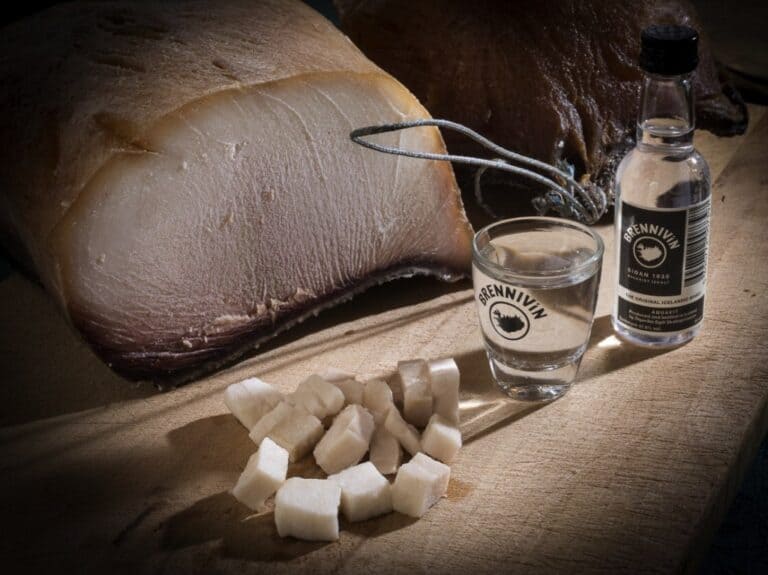
In Iceland, the options available for accommodations make sure there is something suitable for everyone.
There are hotels around Iceland to suit all tastes and budgets, from the most luxurious to the simple and sufficient.
Renting a summerhouse is a good alternative for people who want to spend their vacation peacefully and acquaint themselves with a certain area of Iceland. Summerhouses are also an economical choice for small groups and families. Most summerhouses offer cooking facilities and access to hot tubs.
A nice guesthouse offers a friendly and relaxed traveling experience. Most Icelandic guesthouses are family owned and operated, and offer a homely atmosphere and friendly service.
For those traversing the Icelandic highlands, mountain huts are available along the most common trails and in other areas. In most cases, these huts are very basic shelters along the most popular routes. Space is limited so you will need to book in advance.
Camping is a popular choice for many travelers in Iceland. There are around 170 registered campsites in Iceland, usually open from the beginning of June until late August or mid-September. Many visitors come to Iceland to experience the pure, clean, and untouched environment. Responsible camping allows you to enjoy Iceland in its purest form and depends on campers respecting nature and minimizing their impact on the area they are camping in.
There is a great selection of youth and family hostels all around Iceland and in the capital of Reykjavík. Hostels are for individuals, families, and groups, and offer low priced rooms and quality overnight accommodation in a friendly atmosphere.
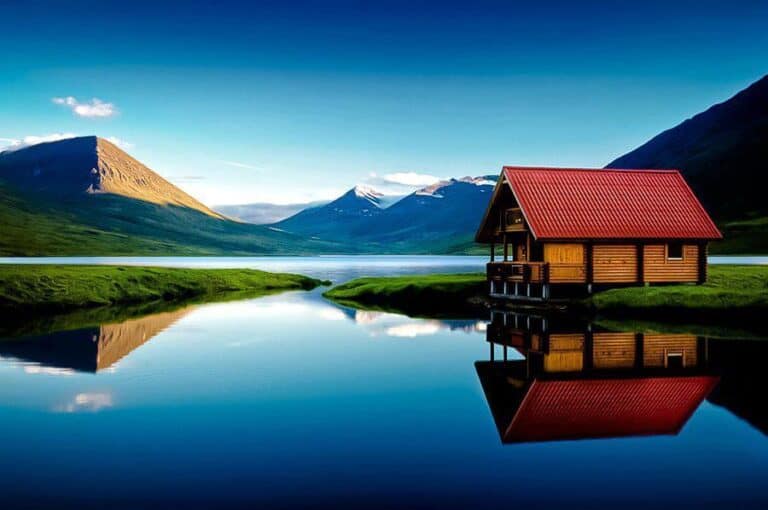
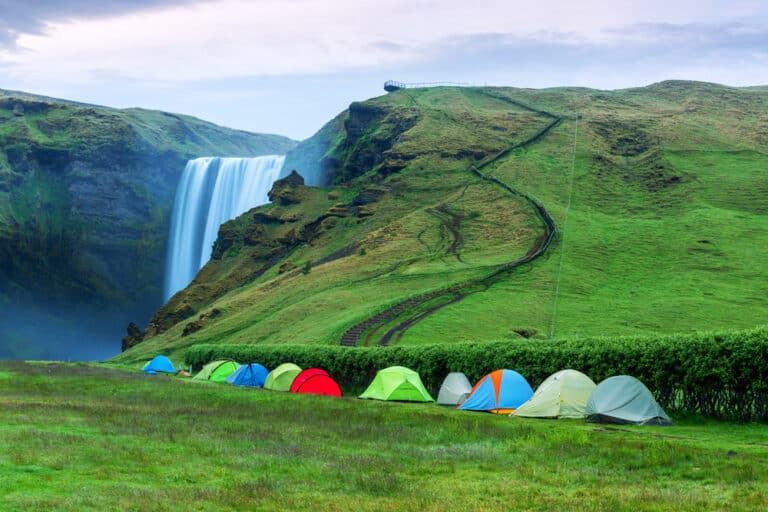

The Blue Lagoon (Icelandic: Bláa lónið) is a geothermal spa in southwestern Iceland. The spa is located in a lava field near Grindavík and in front of Mount Þorbjörn on Reykjanes Peninsula, in a location favorable for geothermal power, and is supplied by water used in the nearby Svartsengi geothermal power station.
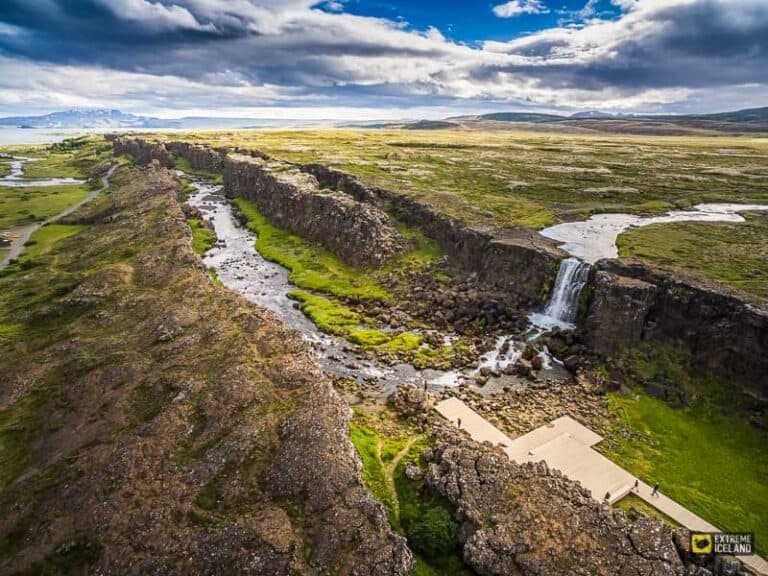
Thingvellir is a favorite stop among travelers along the Golden Circle route. It has been a National Park in Iceland since 1930 and was named a World Heritage site by UNESCO in 2004. When Viking settlers arrived in the 10th century it was the site they chose as the meeting place of Althingi, the world’s oldest parliament.
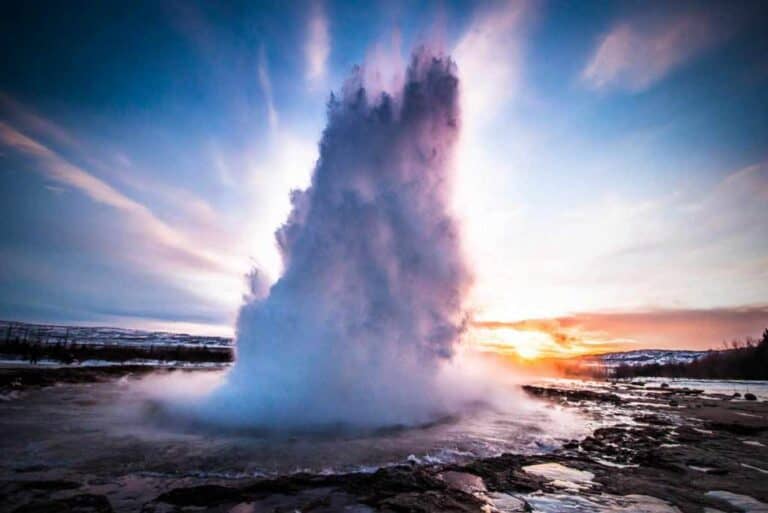
Geysir, sometimes known as The Great Geysir, is a geyser in southwestern Iceland. It was the first geyser described in a printed source and the first known to modern Europeans. The English word geyser derives from Geysir. The name Geysir itself is derived from the Icelandic verb geysa the verb from Old Norse.

Friðheimar (Tomato Farm) is an organic tomato farm in Reykholt in the south of Iceland, a perfect stop if you are driving the Golden Circle yourself. This is a family-run tomato and cucumber farm and restaurant. In order to use up all of their products, they use their scratched tomatoes (that aren’t suitable for supermarkets – but still have all the same flavor!) to make tomato soup for lunch.
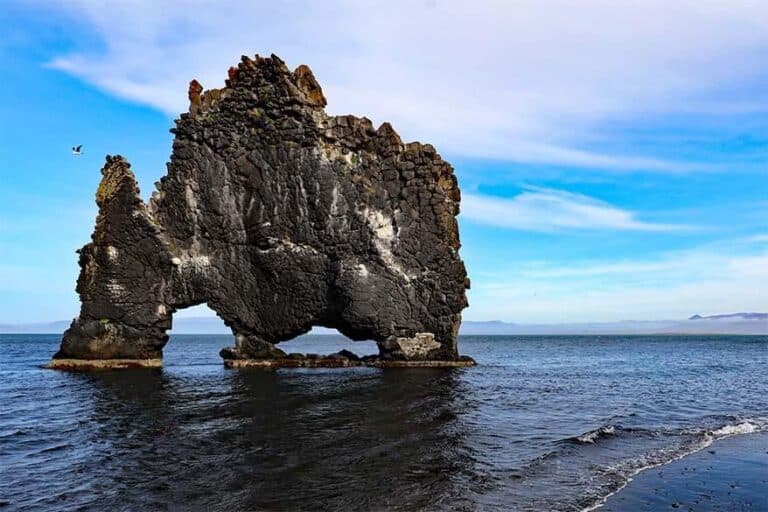
Hvítserkur (Rock) stands by itself just outside the coastline in Húnafjörður fjord in the North-West of Iceland. It’s only a little detour from the main ring road of Iceland, in between Reykir and Blönduós. For those coming in the winter months, Hvitserkur can make the perfect foreground for some shots of the Northern Lights, if you’re lucky enough to get a show!

Iceland is very famous for its black sandy beaches, but you can also find white beaches in the country as well as this red beach in the Westfjords: Rauðasandur Beach. There is nothing there besides the sand, so if you want to go to a totally tranquil beach, with no vendors or shops to distract you, then here you can go for a walk all by yourself.
Accommodation
Hotel or Hostel (single): $33
Double-occupancy room: $67
Food
Meals for one day: $12
Transportation
Taxis, local buses, train: $11
Intercity: $25
Entertainment
Entrance tickets, shows: $13
Art museum: $12
Wine & spa: $32
Tips & Handouts
Guides & service providers: $91
Alcohol
Drinks for one day: $5.57
Beer: $9.51
Accommodation
Hotel or rental home (single): $82
Double-occupancy room: $164
Blue Lagoon: $210
Food
Meals for one day: $29
Dinner (fish market): $193
Transportation
Taxis or Car rental: $26
Intercity: $63
Entertainment
Entrance tickets & shows: $36
Art museum: $12
Wine & spa: $32
Tips & Handouts
Guides & service providers: $91
Alcohol
Drinks for one day: $9.92
Beer: $9.51
Accommodation
Resort or hotel (single): $191
Double-occupancy room: $382
Blue Lagoon: $210
Food
Meals for one day: $67
Dinner (fish market): $193
Transportation
Car Rentals or private driver: $62
Intercity: $159
Entertainment
Entrance tickets & shows: $106
Art museum: $12
Wine & spa: $32
Tips & Handouts
Guides & service providers: $91
Alcohol
Drinks for one day: $28
Beer: $9.51
Iceland is one of the perfect destinations to go camping because of all of its natural beauty. Campgrounds can be found all over Iceland. You can camp in official campgrounds for $15-20 USD per night for a basic plot (a flat space for your tent, usually without electricity). Many campgrounds have common rooms so that, if the weather is terrible, you can stay indoors and stay dry.
Find free hot springs. While the Blue Lagoon may be the most popular hot spring in the country, there are lots of others around the country that are free (or at the very least, less money than the overpriced Blue Lagoon). Visit the website Hotpot Iceland (hotpoticeland.com) to find the best hot springs all around the island
Rent a car or take public transportation to save on transportation expenses. Renting a car costs between $35-75 USD per day but you can split the costs with friends or by picking up travelers on the road. You’ll get a lot more flexibility than if you take the bus and if you can split the ride with a couple of people it will be cheaper too. The buses here are cheap and slow and they won’t stop at main landmarks, but they are an affordable choice for anyone not looking to drive.
Limit the amount you drink. Due to high taxes, it’s very expensive to drink in Iceland. Shots are almost $10 USD, beer is that much or more, and wine is almost $15 USD. If you want to blow your budget, hit the bar.
When planning for your trip to Iceland, don’t forget about travel insurance! You never know what might happen and it’s better to be safe than sorry.

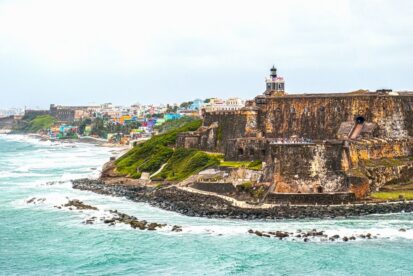


Interested in traveling the world while getting paid? Here at Diversifying Globetrotters LLC, we are partnered with Melanin On The Map and Travel Coach Network to help people across the world find financial, personal, and time freedom. Join the hundreds of others making the change to better themselves while exploring the world and adding money to their pockets.